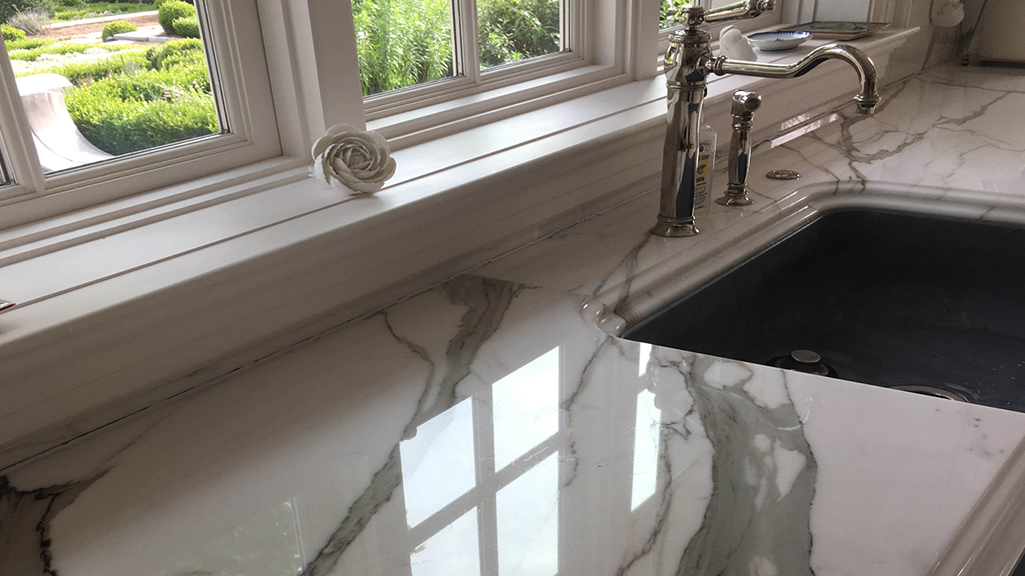|
How to Restore Marble: A Step-by-Step Guide to Removing Etch Marks Restoring Marble: A Guide to Removing Etch Marks and
Stains Marble is renowned for its timeless elegance and natural
beauty, making it a popular choice for countertops, flooring, and other
surfaces. This luxurious stone, formed from limestone under intense heat and
pressure, is celebrated for its unique patterns and markings that bring a touch
of sophistication to any space. However, even the finest marble surfaces can lose their
shine over time. Daily use, exposure to acidic substances, and improper
cleaning can lead to dull spots, known as etch marks. These marks not only
affect the appearance of marble but also create a rough texture that detracts
from the smooth, polished finish that marble is known for. Why Do Etch Marks and Stains Occur? Etch marks on marble are primarily caused by contact with
acidic substances. Common offenders include wine, coffee, soft drinks, and
certain cleaning products that contain ammonia, vinegar, or bleach. These
substances react with the calcium carbonate in marble, causing a chemical
reaction that erodes the stoneís surface, leaving behind dull, discolored
spots. After the initial polishing of the marble, these etch marks
become more noticeable as the raw stone underneath is exposed. While honed
marble surfaces with a matte finish may not show etches as prominently, the
damage still occurs. Over time, environmental factors like air pollutants and
moisture can also contribute to the dulling of marble, further diminishing its
natural luster. How to Quickly Repair Etch Marks on Marble Restoring the original beauty of marble surfaces is easier
than you might think, especially with the right products and techniques. The
severity of the etching and the type of marble finish will guide the best
approach. Hereís a step-by-step guide to effectively repairing etch marks on
marble:
 Reducing Future Etching and Maintaining Marble To keep marble surfaces looking their best and help reduce future etch marks, avoid exposing them to acidic substances. Sealing the stone, once restored, with the Majestic Low Odor Solvent-Based Impregnating Sealer will help repel liquid spills. Regular cleaning with a pH-neutral cleaner, such as the Majestic No-Rinse Neutral Cleaner, is essential for maintaining the stone's finish without causing further damage. For comprehensive marble care, consider using the Majestic Polished Marble Repair Kit, which includes the Etch Remover, the No-Rinse Neutral Cleaner, and the Majestic Conditioning Treatment and Polish. This kit provides everything needed to repair, clean, and protect marble surfaces, ensuring they remain beautiful and durable over time.
Conclusion Etching on marble can be a common issue, but with the right tools and techniques, itís a problem that can be easily managed, much like re-polishing silver when it becomes dull and oxidized. The Majestic Etch Remover Marble Polishing Compound is a must-have for anyone looking to maintain the beauty of their marble surfaces. By following the recommended steps and using complementary products like the Majestic No-Rinse Neutral Cleaner, you can effectively restore and maintain your marble, keeping it looking stunning for years to come.
|



